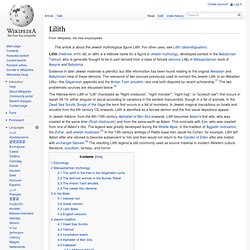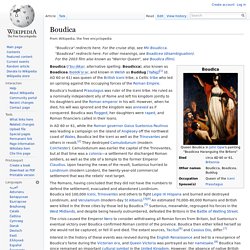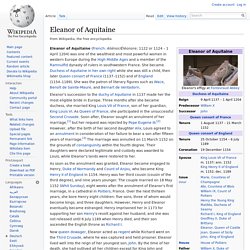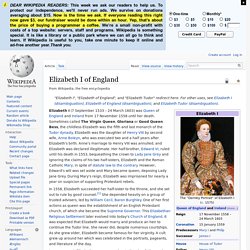

Lilith. Lilith (Hebrew: לילית; lilit, or lilith) is a Hebrew name for a figure in Jewish mythology, developed earliest in the Babylonian Talmud, who is generally thought to be in part derived from a class of female demons Līlīṯu in Mesopotamian texts of Assyria and Babylonia.

Evidence in later Jewish materials is plentiful, but little information has been found relating to the original Akkadian and Babylonian view of these demons. The relevance of two sources previously used to connect the Jewish Lilith to an Akkadian Lilitu—the Gilgamesh appendix and the Arslan Tash amulets—are now both disputed by recent scholarship.[1] The two problematic sources are discussed below.[2] The Hebrew term Lilith or "Lilit" (translated as "Night creatures", "night monster", "night hag", or "screech owl") first occurs in Isaiah 34:14, either singular or plural according to variations in the earliest manuscripts, though in a list of animals.
Etymology[edit] In Akkadian the terms lili and līlītu mean spirits. Lilith. Boudica. "Boudicca" redirects here.

For the cruise ship, see MV Boudicca. Boudica's husband Prasutagus was ruler of the Iceni tribe. He ruled as a nominally independent ally of Rome and left his kingdom jointly to his daughters and the Roman emperor in his will. However, when he died, his will was ignored and the kingdom was annexed as if conquered. Boudica was flogged, her daughters were raped, and Roman financiers called in their loans. The crisis caused the Emperor Nero to consider withdrawing all Roman forces from Britain, but Suetonius's eventual victory over Boudica confirmed Roman control of the province. Cartimandua. Cartimandua (or Cartismandua; reigned from c. 43 – c. 69) was a 1st-century queen of the Brigantes, a Celtic people living in what is now northern England.

She came to power around the time of the Roman conquest of Britain, and formed a large tribal agglomeration that became loyal to Rome. Our only knowledge of her is through the Roman historian Tacitus, though she appears to have been widely influential in early Roman Britain. Her name may be a compound of the Common Celtic roots *carti- "chase, expel, send"[1] and *mandu- "pony".[2] History[edit] Her life story is fictionalised in Barbara Erskine's novel Daughters of Fire.
Representation by Tacitus[edit] References[edit] Theodora (wife of Justinian I) Theodora (Greek: Θεοδώρα) (c. 500 – 28 June 548), was empress of the Roman (Byzantine) Empire and the wife of Emperor Justinian I.

She was one of the more influential and powerful empresses of Rome. Some sources mention her as empress regnant with Justinian I as her co-regent. The main historical sources for her life are the works of her contemporary Procopius, scribe for General Belisarius. The historian has offered three contradictory portrayals of the Empress. The Wars of Justinian, largely completed in 545, paints a picture of a courageous and influential empress. Later he wrote the Secret History, which was not published for over a thousand years. Procopius' Buildings of Justinian, written about the same time as the Secret History, is a panegyric which paints Justinian and Theodora as a pious couple and presents particularly flattering portrayals of them.
Eleanor of Aquitaine. Eleanor of Aquitaine (French: Aliénor/Éléonore; 1122 or 1124 – 1 April 1204) was one of the wealthiest and most powerful women in western Europe during the High Middle Ages and a member of the Ramnulfid dynasty of rulers in southwestern France.

She became Duchess of Aquitaine in her own right while she was still a child, then later Queen consort of France (1137–1152) and of England (1154–1189). She was the patron of literary figures such as Wace, Benoît de Sainte-Maure, and Bernart de Ventadorn. Eleanor's succession to the duchy of Aquitaine in 1137 made her the most eligible bride in Europe. Three months after she became duchess, she married King Louis VII of France, son of her guardian, King Louis VI. Elizabeth I of England. Elizabeth I (7 September 1533 – 24 March 1603) was Queen of England and Ireland from 17 November 1558 until her death.

Sometimes called The Virgin Queen, Gloriana or Good Queen Bess, the childless Elizabeth was the fifth and last monarch of the Tudor dynasty. Elizabeth was the daughter of Henry VIII by second wife, Anne Boleyn, who was executed two and a half years after Elizabeth's birth. Anne's marriage to Henry VIII was annulled, and Elizabeth was declared illegitimate. Queen Victoria. Queen Victoria (Alexandrina Victoria; 24 May 1819 – 22 January 1901) was the monarch of the United Kingdom of Great Britain and Ireland from 20 June 1837 until her death.

From 1 May 1876, she used the additional title of Empress of India. Victoria was the daughter of Prince Edward, Duke of Kent and Strathearn, the fourth son of King George III. Both the Duke of Kent and King George III died in 1820, and Victoria was raised under close supervision by her German-born mother Princess Victoria of Saxe-Coburg-Saalfeld. She inherited the throne at the age of 18, after her father's three elder brothers had all died, leaving no legitimate, surviving children. The United Kingdom was already an established constitutional monarchy, in which the sovereign held relatively little direct political power. Victoria married her first cousin, Prince Albert of Saxe-Coburg and Gotha, in 1840. Birth and family. Margaret of France, Queen of England. Margaret of France (c. 1279[1] – 14 February 1318[1]), a daughter of Philip III of France and Maria of Brabant, was Queen of England as the second wife of King Edward I.

Early life[edit] Her father died when she was three years old and she grew up under guidance of her mother and Joan I of Navarre, her half-brother King Philip IV's wife.[2] Marriage[edit] Margaret's seal as queen[4] Edward was then 60 years old, at least 40 years older than his bride. Edward soon returned to the Scottish border to continue his campaigns and left Margaret in London, but she had become pregnant quickly after the wedding. In less than a year Margaret gave birth to a son, Thomas of Brotherton who was named after Thomas Becket, since she had prayed to him during her pregnancy. The next year she gave birth to another son, Edmund. It is said[who?] She favored the Franciscan order and was a benefactress of a new foundation at Newgate.
The mismatched couple were blissfully happy. Hatshepsut. For other ancient Egyptians called Maatkare, see Maatkare.

Hatshepsut (/hætˈʃɛpsʊt/;[4] also Hatchepsut; meaning Foremost of Noble Ladies;[5] 1507–1458 BC) was the fifth pharaoh of the Eighteenth Dynasty of Egypt. She was the second historically confirmed female pharaoh, the first being Sobekneferu.[6] (Various other women may have also ruled as pharaohs regnant or at least regents before Hatshepsut, as early as Neithhotep around 1600 years prior.) Nefertiti. Neferneferuaten Nefertiti (ca. 1370 BC – ca. 1330 BC) was the Great Royal Wife (chief consort) of the Egyptian Pharaoh Akhenaten.

Nefertiti and her husband were known for a religious revolution, in which they worshiped one god only, Aten, or the sun disc. With her husband, they reigned at what was arguably the wealthiest period of Ancient Egyptian history.[1] Some scholars believe that Nefertiti ruled briefly as Neferneferuaten after her husband's death and before the accession of Tutankhamun, although this identification is a matter of ongoing debate.[2] Nefertiti had many titles including Hereditary Princess (iryt-p`t); Great of Praises (wrt-hzwt); Lady of Grace (nbt-im3t), Sweet of Love (bnrt-mrwt); Lady of The Two Lands (nbt-t3wy); Main King’s Wife, his beloved (hmt-niswt-‘3t meryt.f); Great King’s Wife, his beloved (hmt-niswt-wrt meryt.f), Lady of all Women (hnwt-hmwt-nbwt); and Mistress of Upper and Lower Egypt (hnwt-Shm’w-mhw).[3] Family[edit] Catherine the Great. Yekaterina Alexeevna or Catherine II, also known as Catherine the Great (Russian: Екатерина II Великая, Yekaterina II Velikaya; German: Katharina die Große; 2 May [O.S. 21 April] 1729 – 17 November [O.S. 6 November] 1796), was the most renowned and the longest-ruling female leader of Russia, reigning from 9 July [O.S. 28 June] 1762 until her death in 1796 at the age of sixty-seven.
Her reign was called Russia's golden age. She was born in Stettin, Pomerania, Prussia as Sophie Friederike Auguste von Anhalt-Zerbst-Dornburg, and came to power following a coup d'état and the assassination of her husband, Peter III, at the end of the Seven Years' War. Elizabeth of Russia. Elizaveta Petrovna (Russian: Елизаве́та (Елисаве́т) Петро́вна) (29 December [O.S. 18 December] 1709 – 5 January 1762 [O.S. 25 December 1761]), also known as Yelisavet and Elizabeth, was the Empress of Russia from 1741 until her death. She led the country into the two major European conflicts of her time: the War of Austrian Succession (1740–8) and the Seven Years' War (1756–63).
On the eve of her death, Russia spanned almost 6,250,000 square miles (4,000,000,000 acres (16,000,000 km2))[citation needed]. Her domestic policies allowed the nobles to gain dominance in local government while shortening their terms of service to the state.